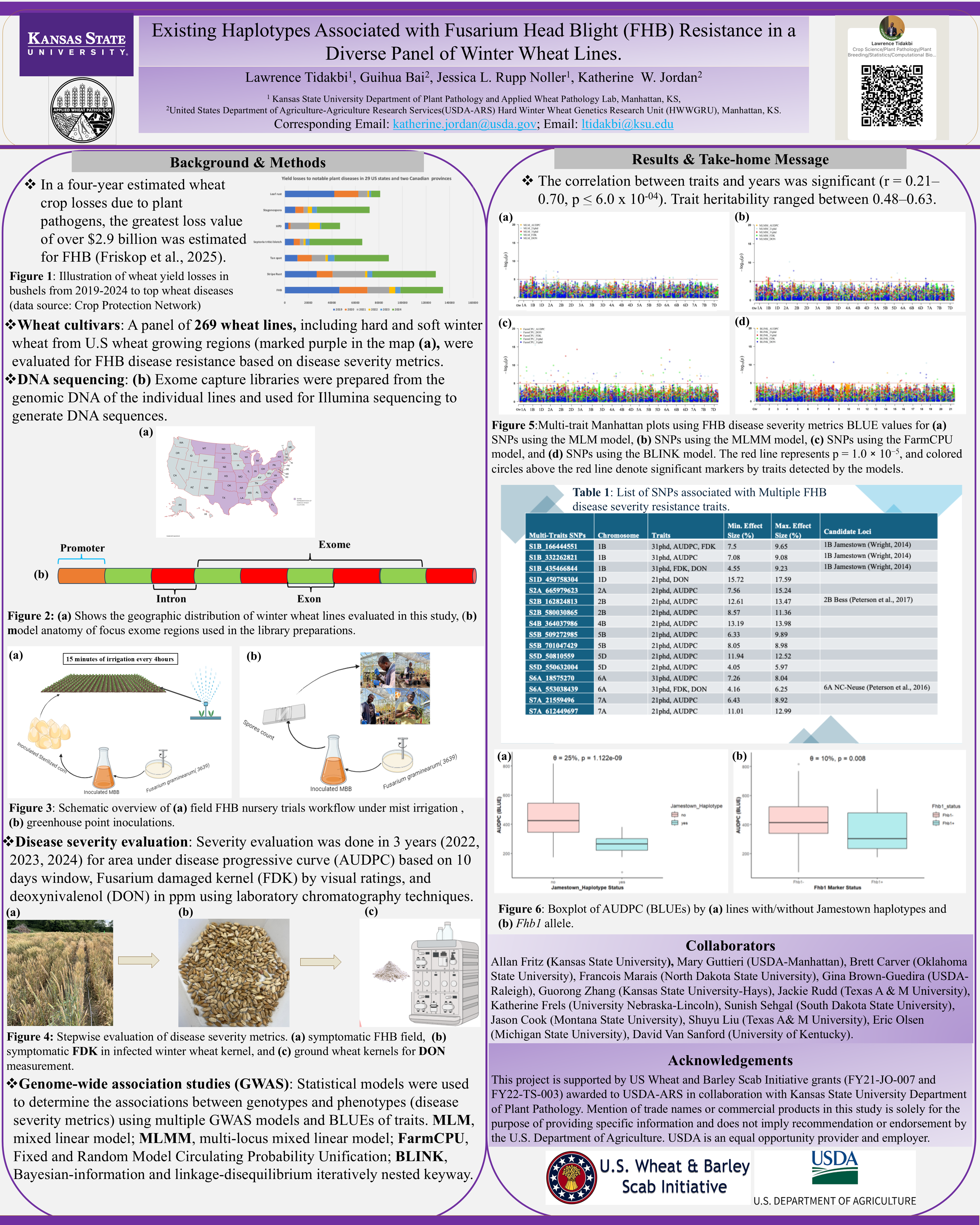Authors: Lawrence Tidakbi 1, Guihua Bai 2, Jessica L. Rupp Noller 1, Katherine W. Jordan 2
1. Department of Plant Pathology, Kansas State University, Manhattan, KS
2. Department of Agronomy, Kansas State University, Manhattan, KS
2. United States Department of Agriculture-Agriculture Research Services (USDA-ARS) Hard Winter Wheat Genetics Research Unit (HWWGRU), Manhattan, KS
Presenting Author: Lawrence Tidakbi
Abstract
Fusarium head blight (FHB) is responsible for significant yield losses among the plant pathogenic diseases in wheat. In this study, we genotyped and evaluated a diversity panel of wheat cultivars representing most U.S. public breeding programs for field FHB disease severity metrics. The results show significant variations in the phenotypic FHB disease severity, including lines outperforming the moderately resistant check Everest (PI: 659807) and some underperforming compared to the susceptible check Overley (PI: 634934). The correlation between traits and years was significant (r = 0.21–0.70, p < 6.0 x 10-04). Trait heritability ranged between 0.48–0.63. Using genomic variants called in the practical haplotype graph for genome-wide association studies, we identified SNPs within genomic intervals of haplotypes and alleles previously associated with FHB resistance. SNPs were mapped on all chromosomes except 4D and 7D. Previous associations with Jamestown, Bess, and NC-Neuse alleles were mapped, with the Jamestown haplotype exhibiting the strongest effect, lowering AUDPC and FDK by ~25% and mycotoxin DON level by 18%. Most associations with rare alleles (MAF < 0.05) were susceptible alleles, and the favorable alleles/haplotypes were common alleles.

